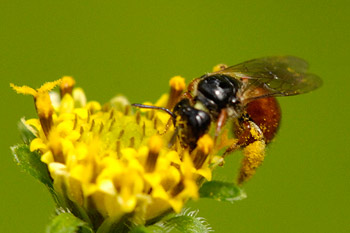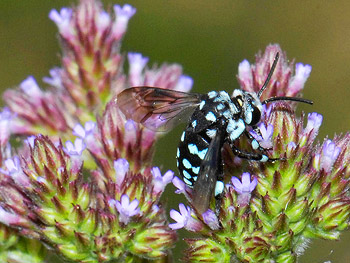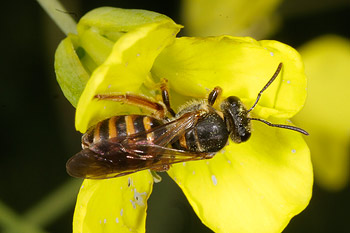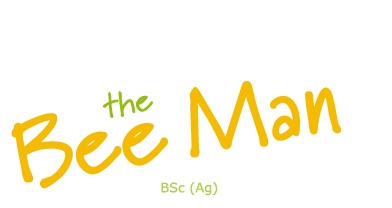Some weeds of noteThese cannot be left out as they can be important forage sources at times, though not always appreciated. PLANT
DESCRIPTION
PHOTO
Bidens pilosa (Cobblers pegs)
This ubiquitous weed is the absolute bane of gardeners, but a good forage source for bees. As a result, beekeepers do not have a good reputation for weeding.
 Thistles
The flower of Scotland is a showy background for our native bees that find it a useful forage source
 Lantana
This terribly invasive weed does have some redeeming features, and I suggest that clearing be done progressively. The area below is great fauna habitat, all types, and reed bees find the stems suitable for their nests. Just look for the holes in the stems
Verbena bonariensis (Purple Top)
The flowers of this widespread weed are used by many native bees
 Blue billygoat weed (Ageratum houtonianum)
Common weed in gardens. probably in the ‘Wild flowers growing area’ in the Houston park. Liked by Apis and stingless bees.
Rapistrum rugosum (Wild Turnip)
A very common weed of farming country Photo by Marc Newman  |

